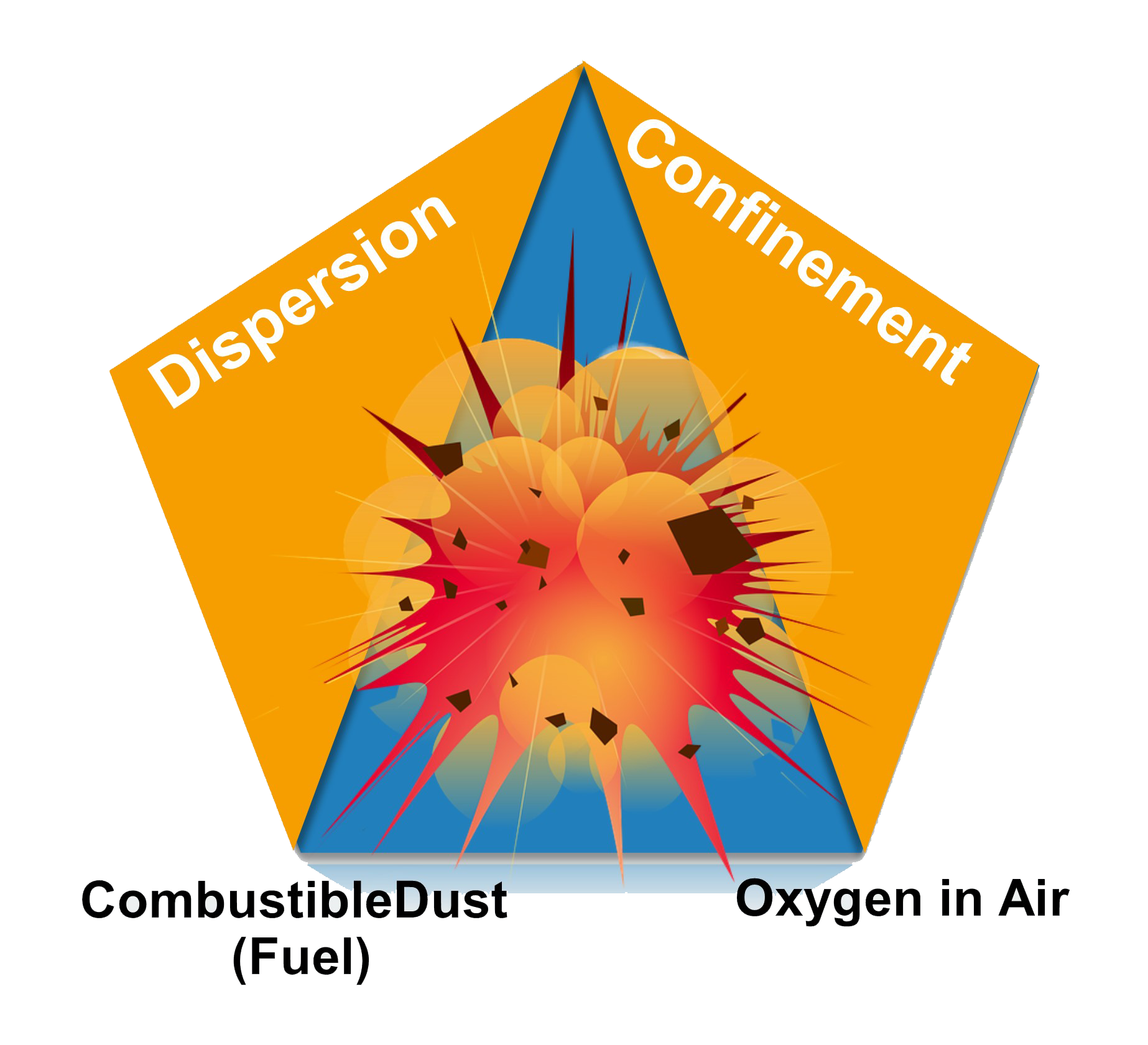 What Is Combustible Dust in Welding and How Do You Prevent Explosions?
What Is Combustible Dust in Welding and How Do You Prevent Explosions?
Summary
Combustible dust in welding environments poses serious fire and explosion risks, especially when generated from metals, plastics, wood, and other reactive materials. Proper dust collection, wet downdraft tables, and adherence to NFPA guidelines are essential to protect workers. Understanding dust types, ignition hazards, and prevention strategies ensures a safer workplace.
Combustible dust is a metallic or non-metallic material composed of distinct particulate that presents a fire or explosion hazard when met with air, or other oxidizing mediums, over a variety of concentrations. Combustible dust is generated when materials are being transported, handled, processed, shaped, or polished, and during cutting, sifting, mixing, and abrasive blasting applications.
Dust that is contained inside of processing equipment or ventilation systems can deposit into ducts and become concentrated in collection systems such as baghouses. Equipment that is used to store, collect or, handle combustible dust requires specific design features to reduce the risk of dexplosion.
Welding, cutting, and other hot work processes are the cause of many workplace dust explosions. Combustible dust trails on surfaces can act as a fuse to serve as a source of ignition in other areas.
Types of Combustible Dust and Ignition Hazards
Facilities at risk of a fire or combustible dust explosion can reduce risks by following the NFPA’s recommended guidelines. To prevent combustible dust from escaping into the work environment, central dust collectors and wet downdraft tables are required to control contaminants. Dust control equipment must be designed to prevent dust explosion and deflagration hazards.
|
Fire Triangle |
Not all dust is combustible. Dust will vary in the potential for combustion and how severe airborne dust deflagrations might be. However, materials which can burn or corrode in contact with oxygen can form combustible dusts.
These reactive materials include:
|
||
 |
For a dust deflagration to occur, a large and dense cloud of dust needs to become airborne at one time and make contact with an energy source that is strong enough to cause ignition. To understand how dense a dust cloud is and what type of energy sources are required to create an ignition hazard can only be learned through specialized lab testing. For certain dust, a static spark is enough to ignite a dense cloud vs. others that may require an open flame or contact with a hot surface.
A small explosion or shock can stir up settled dust into the air creating a big cloud that is often ignited by the heat of the first explosion. It's important to note that finer dust particles become airborne and ignite more easily.
|
PREVENTING COMBUSTIBLE DUST HAZARDS
When it comes to preventing combustible dust hazards there are many things you can do to eliminate the risks. Understanding the materials that are present in your work environment or finding out what they are if you are unsure will help determine what type of extraction system will be most efficient for your application. It's important to remember not to use compressed air when cleaning powder materials and dust.
Welding and other hot work processes should never take place where combustible dust is present on surfaces or in areas where combustible dust may become airborne. Check adjacent and concealed spaces for dust. Consult a supervisor or safety professional if you are unsure about the risks or safety requirements.
Wet downdraft tables and central dust collectors can be implemented in industrial facilities to establish safety for your staff. Explosive dust poses a serious risk, but Fume Xtractors Wet Downdraft Tables offer a powerful solution. Designed with high-velocity extraction, these tables capture hazardous combustible dusts like aluminum and titanium right at the source. But that's not all – the integrated water system neutralizes the explosion risk, ensuring maximum safety.
Wet Downdraft Tables and Combustible Dust Safety Systems
Constructed from durable, corrosion-resistant stainless steel and equipped with a robust NEMA 12 control panel, these tables are built to last, safeguarding your investment and protecting your workforce for years to come.
Compact yet remarkably cost-efficient, Fume Xtractors Wet Downdraft Tables are the market's top choice for high-performance wet dust collection. The ingenious internal baffling creates optimal turbulence, maximizing filtration efficiency while preventing water from escaping the system.
Compliance is key, and these tables meet stringent NFPA 652, 654, and 484 standards, giving you peace of mind knowing your operation adheres to industry regulations.
Always be extra careful about electrical safety, including static charge build-up, and be sure to follow all safety procedures, hot work precautions, and any other safety rules to prevent dust explosions.
To determine what explosive dust collection system is best for your application, get in touch with our specialists for your customized quote!
Resource: Combustible Dust Hazards in The Welding and Cutting Environment
FAQs: Combustible Dust in Welding
What is combustible dust and why is it dangerous in welding?
Combustible dust consists of fine particulate that can ignite when exposed to heat, sparks, or flames. In welding environments, dust can cause fires or explosions.
Which materials produce combustible dust?
Metals, plastics, wood, coal, paper, grains, pharmaceuticals, and other organic or carbon-based materials can form combustible dusts.
How can I prevent combustible dust explosions?
Regular cleaning, proper ventilation, wet downdraft tables, central dust collectors, and following NFPA guidelines all help reduce risk.
Are all dust types equally hazardous?
No. Dust particle size, density, and composition affect ignition potential. Finer particles ignite more easily, and reactive materials are more dangerous.
What safety equipment is recommended for welding with combustible dust present?
Fume extraction systems, wet downdraft tables, PPE, grounding for static electricity, and adherence to NFPA standards ensure safety.
You may also like:
• Does NFPA 484 Apply to You?
• Metal Fume Fever Prevention
• Why Is Welding Fume Important?


